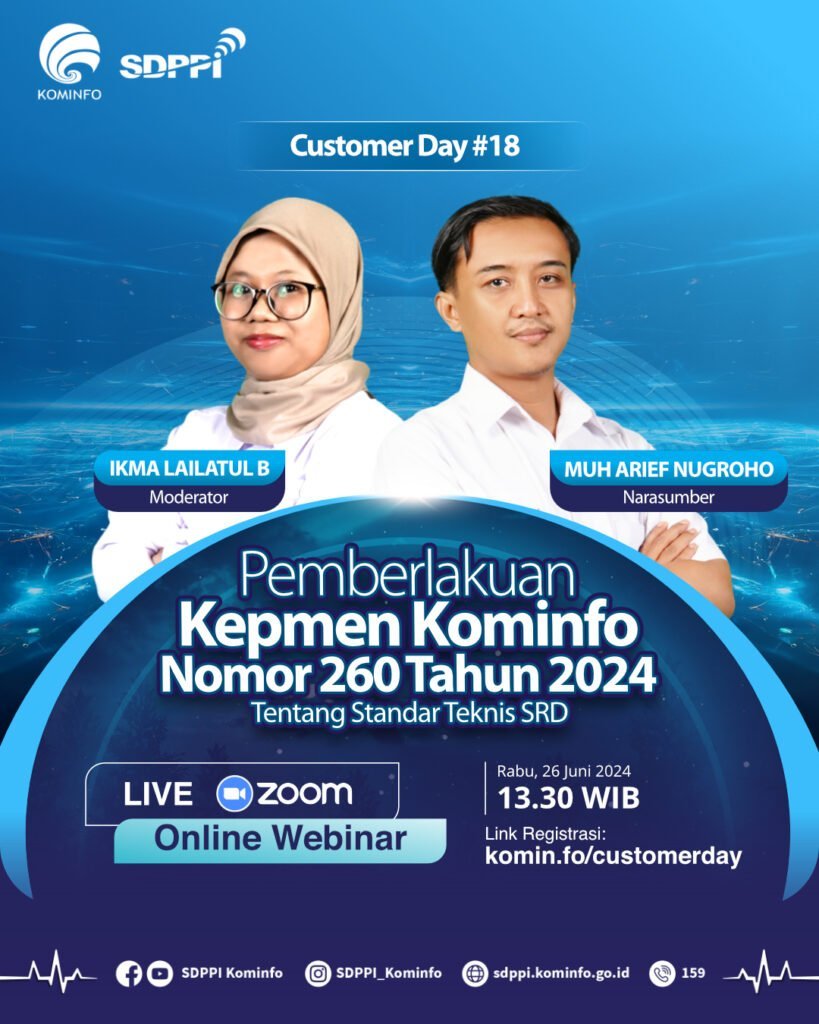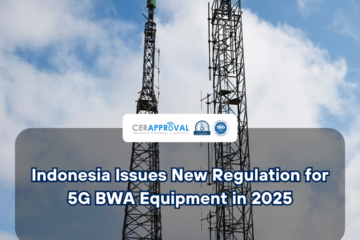
The Ministry of Communication and Informatics of the Republic of Indonesia has issued Ministerial Decree No. 260 of 2024, which regulates the technical standards for Short Range Devices (SRD), updating the Regulation of the Director General of Resources and Postal and Informatics Devices No. 161 of 2019. Here is a summary of some key points:
Classification of SRD Technology in Indonesia
SRD (Short Range Device) technology is classified into 10 groups divided into 2 categories: old groups and new groups.
Old SRD technology groups include:
- Bluetooth
- NFC
- RFID
- LR-WPAN
- Devices with transmission power below 10 mW
New SRD technology groups include:
- UWB
- Cordless telephone
- WPT (wireless power transmission)
- ITS (intelligent transport system)
The new SRD technologies will be implemented starting August 11, 2024.
Details of the SRD Technical Standards Regulation Update
- Non-Ionizing Radiation Requirements: References to other regulations.
- Electrical Safety Requirements: For devices other than audio, video, and Information Technology (IT), electrical safety requirements can meet SNI or other IEC standards.
- EMC Requirements: Immunity requirements, removal of FCC references.
- Operational Technical Provisions: Prohibition of adding signal boosters.
- New SRD Technology Groups: UWB, cordless telephone, WPT (wireless power transmission), and ITS (intelligent transport system).
Old SRD Technology Groups
- Bluetooth: Addition of FCC references.
- NFC: Addition of EN 300 330 references.
- RFID:
- Addition of frequency bands 433-434.79 MHz and 2 400–2 483.5 MHz.
- Removal of RFID with ISR.
- LR-WPAN: Addition of frequency bands 314 – 316 MHz; 433 – 434.79 MHz; and 920 – 923 MHz.
- Other SRDs:
- Addition of frequency bands 169.4 – 169.475 MHz; 216 – 217 MHz; 402 – 405 MHz; 5 725 – 5 850 MHz; and 57 – 64 GHz.
- Addition of duty cycle requirements < 10% on frequency bands 9 – 315 kHz.
- Addition of channel spacing requirements of 12.5 kHz, 20 kHz, or 25 kHz on frequency bands 72.08 MHz; 72.20 MHz; 72.40 MHz; 72.60 MHz; 158.275 paired with 162.875 MHz; and 158.325 paired with 162.925 MHz.
- Addition of bandwidth requirements ≤ 200 kHz for frequency bands 88.00 – 108 MHz.
- Addition of bandwidth requirements ≤ 50 kHz for frequency bands 169.4 – 169.475 MHz; and 180 – 200 MHz.
- EIRP in 5125-5250 MHz and 5250-5350 MHz to be ≤ 100 mW EIRP.
- Special IoT requirements for one operator in 920-923 MHz.
Antenna Requirements
A declaration letter is required during the certification application! Antennas must be integrated or dedicated, provided they meet at least one of the following requirements:
- Antennas must be packaged with the SRD and integrated into the system.
- Antennas must have unique connectors.
- Antennas must have special sensing so that only antennas from the manufacturer are used.
- Antennas are not traded publicly, only used for industrial purposes, and installed by skilled personnel.
Testing Methods
- SRD must be tested based on the configuration with the highest transmission power (RF Output Power).
- Testing of transmitter spurious emission is done with RBW values according to the reference testing method used.
- Testing of transmission power (RF Output Power) is conducted with the following provisions:
- At least performed on the lowest and highest channels or according to the testing method.
- In the case of conducted transmission power (RF Output Power) testing, the transmission power (RF Output Power) is calculated using the following formula:
| Daya Pancar (RF Output Power) = Output Power Conducted + Gain Antena |
Want your products certified according to Indonesian standards? Contact Cerapproval International now for the best certification services!
Cerapproval International – Your Partner in Telecommunication Device Certification



0 Comments